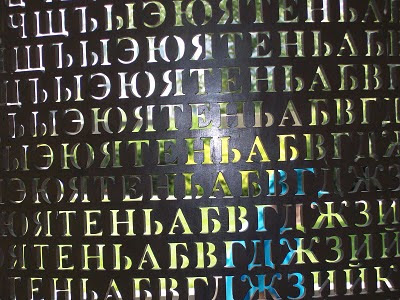 (click for better view)
(click for better view)"Clues to Stubborn Secret in C.I.A.’s Backyard" by JOHN SCHWARTZ, New York Times 11/20/2010
Excerpt
It is perhaps one of the C.I.A.’s most mischievous secrets.
“Kryptos,” the sculpture nestled in a courtyard of the agency’s Virginia headquarters since 1990, is a work of art with a secret code embedded in the letters that are punched into its four panels of curving copper.
“Our work is about discovery — discovering secrets,” said Toni Hiley, director of the C.I.A. Museum. “And this sculpture is full of them, and it still hasn’t given up the last of its secrets.”
Not for lack of trying. For many thousands of would-be code crackers worldwide, “Kryptos” has become an object of obsession. Dan Brown has even referred to it in his novels.
The code breakers have had some success. Three of the puzzles, 768 characters long, were solved by 1999, revealing passages — one lyrical, one obscure and one taken from history. But the fourth message of “Kryptos” — the name, in Greek, means “hidden” — has resisted the best efforts of brains and computers.
And Jim Sanborn, the sculptor who created “Kryptos” and its puzzles, is getting a bit frustrated by the wait. “I assumed the code would be cracked in a fairly short time,” he said, adding that the intrusions on his life from people who think they have solved his fourth puzzle are more than he expected.
So now, after 20 years, Mr. Sanborn is nudging the process along. He has provided The New York Times with the answers to six letters in the sculpture’s final passage. The characters that are the 64th through 69th in the final series on the sculpture read NYPVTT. When deciphered, they read BERLIN.
But there are many steps to cracking the code, and the other 91 characters and their proper order are yet to be determined.
“Having some letters where we know what they are supposed to be could be extremely valuable,” said Elonka Dunin, a computer game designer who runs the most popular “Kryptos” Web page.
Note, there is a multimedia link for a hint on the article page.





